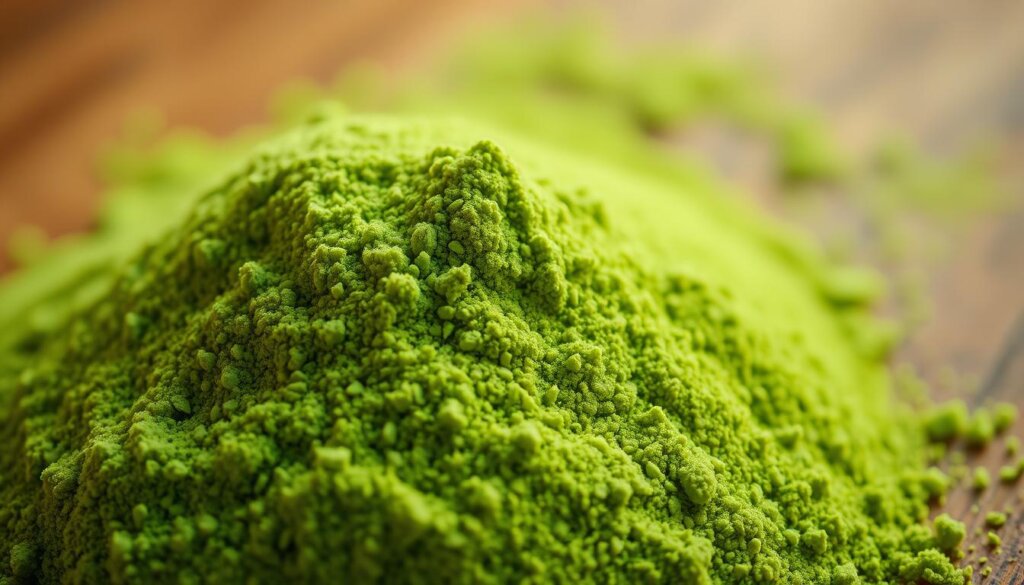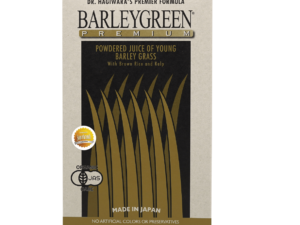Did you know that over 60% of Malaysians incorporate health supplements into their daily routines? Among them, a green superfood has gained popularity for its potential benefits—but like any supplement, it comes with considerations.
This natural supplement is widely available in Malaysian health stores, often used for immune support and weight management. However, since the FDA doesn’t regulate supplements, understanding both the health benefits and potential side effects is crucial.
For personalized advice, Wellness Group (+60123822655) offers expert consultations (Mon-Fri 9:30am-6:30pm, Sat-Sun 10am-5pm). Their team helps navigate the unregulated market safely.
Key Takeaways
- Popular in Malaysia for immune and weight management support.
- Contains 3g of fiber per 10g serving, aiding digestion.
- Flavonoids in the supplement show high bioavailability (2020 study).
- Supplements aren’t FDA-regulated—research is essential.
- Consult experts like Wellness Group for safe usage.
Introduction to Barley Grass Powder

Click to LEARN MORE
Ranked as the fourth most vital cereal crop globally, Hordeum vulgare (barley grass) is harvested young for its dense nutrients. Ancient civilizations, from Egypt to China, used it to treat fatigue and inflammation. Today, it’s a superfood staple in powders, tablets, and fresh juices.
Unlike mature barley grain, the young leaves contain complete amino acids—rare for a plant-based supplement. This makes it a favorite among vegans and fitness enthusiasts. In Malaysia, it’s often blended into tropical smoothies or mixed with coconut water for a refreshing boost.
How It Compares to Other Greens
| Nutrient (per 100g) | Barley Grass | Wheatgrass | Kangkung |
|---|---|---|---|
| Vitamin C | 70mg | 65mg | 55mg |
| Iron | 3.2mg | 2.8mg | 1.7mg |
| Fiber | 3g | 2.5g | 2g |
While gluten-free naturally, cross-contamination during processing is possible. Malaysians should check labels if sensitive. For creative ways to use this green superfood, local health cafes often feature it in detox drinks or energy bowls.
Its adaptability—from traditional remedies to modern health benefits—proves why it’s a grain worth exploring. Whether juiced or powdered, it delivers a chlorophyll-rich punch unmatched by ordinary greens.
Nutritional Profile of Barley Grass Powder
Many health-conscious Malaysians turn to barley grass powder for its impressive nutritional density. Just one tablespoon packs a punch of vitamins, fiber, and plant-based compounds rarely found in other greens.
Rich in Vitamins and Minerals
This superfood contains vitamin A (700% RDA per serving), crucial for immune health and vision. Its vitamin C levels rival oranges, while vitamin K supports bone strength. A 2020 study noted its calcium content competes with dairy, making it ideal for lactose-intolerant individuals.
High Fiber Content
With 3g of fiber per tablespoon, it helps bridge Malaysia’s dietary fiber gap. The balanced soluble-to-insoluble ratio aids digestion and promotes gut health. For context, that’s 12% of the daily intake in a single serving.
Antioxidant Properties
Saponarin and lutonarin—unique antioxidants in barley grass—outperform many superfoods in ORAC (Oxygen Radical Absorbance Capacity) tests. Chlorophyll, responsible for its vibrant green hue, naturally detoxifies the body. Research suggests these compounds may reduce oxidative stress by up to 30%.
“The nutrient synergy in barley grass powder is unparalleled among plant-based supplements.”
Potential Health Benefits of Barley Grass Powder
Modern science confirms what traditional medicine long suggested about this green superfood. Packed with bioactive compounds, it may support heart function, metabolic balance, and immune defenses. Let’s explore the evidence-backed health benefits.

Supports Heart Health
A 2004 study on hamsters revealed that beta-glucan, a soluble fiber in barley grass, reduces LDL cholesterol by binding to bile acids. This mechanism helps the body eliminate excess cholesterol naturally.
Additionally, gamma-aminobutyric acid (GABA) in barley grass may lower blood pressure. Combined with potassium, these nutrients promote cardiovascular resilience—a key concern for Malaysians, where heart disease accounts for 25% of deaths annually.
May Aid Blood Sugar Control
Fiber’s role in slowing glucose absorption is well-documented. A 2014 meta-analysis linked barley grass to improved insulin sensitivity, particularly in type 2 diabetes. For Malaysia’s 3.6 million diabetics, this suggests potential as a dietary adjunct.
However, older studies have limitations. Current research recommends pairing the powder with balanced meals for optimal effects—typically 1–2 teaspoons daily.
Boosts Immune Function
Vitamin C in barley grass enhances leukocyte production, strengthening the immune response. A 2019 study noted its prebiotic fibers also nourish gut microbiota, where 70% of immunity originates.
For Malaysians navigating seasonal flu or urban pollution, this dual action—antioxidant and gut-supportive—makes it a practical addition to wellness routines.
“Barley grass’s nutrient synergy offers more than basic nutrition—it targets multiple systems for holistic health.”
Barley Grass Powder Side Effects: What to Watch For

Click to LEARN MORE
Not all superfoods suit everyone—understanding possible reactions helps Malaysians make informed choices. While this green supplement is celebrated for its nutrients, some users report mild to moderate side effects. Recognizing these early ensures a safer experience.
Digestive Issues

Click to LEARN MORE
New users may experience bloating or gas, especially when consuming more than 10g daily. The high fiber content, though beneficial, can overwhelm sensitive digestive systems. Starting with small doses (1–2g) and gradually increasing helps the body adjust.
In rare cases, diarrhea or cramps occur. A 2021 FDA report noted 12 adverse events linked to overconsumption. Symptoms typically resolve within 48 hours if usage is paused.
Allergic Reactions
Those allergic to grass pollens or gluten should exercise caution. A 1999 study documented cross-reactivity in individuals with beer allergies (barley-derived). Signs include itching, swelling, or nasal congestion.
Cross-contamination during processing is possible. Malaysians with sensitivities should opt for certified gluten-free brands and monitor for rashes or breathing difficulties.
Interactions with Medications
The potential side effects extend to drug interactions. High vitamin K levels may interfere with blood thinners like warfarin, requiring dosage adjustments. Kidney patients should also note its potassium content (200mg per serving).
“Natural doesn’t always mean risk-free—consult a doctor if you’re on prescription medications.”
Combining it with diuretics or ACE inhibitors could exacerbate electrolyte imbalances. Always disclose supplement use to healthcare providers.
Who Should Avoid Barley Grass Powder?
Before adding barley grass to your routine, consider these important precautions. While generally safe, certain people may need to avoid it or consult healthcare professionals first.
People with celiac disease or gluten sensitivity should verify product purity. The Celiac Society warns about cross-contamination during processing, even though the young leaves themselves are gluten-free.
Those with chronic kidney disease (CKD) must monitor potassium intake. A single serving contains 200mg—potentially problematic for restricted renal diets.
Pregnant or breastfeeding women should exercise caution. Limited research exists on its effects during these sensitive periods. Pediatric use also requires medical supervision for proper dosing.
“When in doubt, get tested—allergy screenings prevent 80% of adverse reactions to plant-based supplements.”
Individuals taking medications like blood thinners or diuretics need professional advice. The supplement’s vitamin K and potassium content may interfere with treatment plans.
Immune-compromised individuals should opt for sterilized products. Raw forms may carry microbial risks for those with weakened defenses.
For personalized guidance, Malaysians can contact Wellness Group at +60123822655. Their experts help navigate these considerations safely.
How to Use Barley Grass Powder Safely
Navigating the world of supplements requires knowing how to use them safely and effectively. While this green superfood offers numerous benefits, proper usage ensures optimal results without unwanted reactions.

Recommended Dosage
Start with 1g daily (¼ teaspoon) for 3-5 days, gradually increasing to 3g. This helps the body adapt to the high fiber content. Those with sensitive digestion may benefit from taking it with meals.
Malaysian healthcare professionals often suggest cycling usage—3 weeks on, 1 week off—to prevent tolerance buildup. Never exceed 10g daily unless supervised by a doctor.
Choosing Quality Supplements
Look for NSF or BPOM certification marks indicating tested quality. Reputable products display batch testing results for heavy metals and microbial content.
Local suppliers like Organic Harvest Malaysia or BMS Organics offer third-party verified options. Avoid brands with vague sourcing information or artificial additives.
Consulting a Professional
Before adding any supplement to your diet, consult a healthcare provider—especially if taking medications. Prepare questions about:
- Potential interactions with current prescriptions
- Personalized dosage based on health status
- Monitoring for adverse effects
For guidance, contact Wellness Group at +60123822655 (Mon-Fri 9:30am-6:30pm, Sat-Sun 10am-5pm). Store powder in airtight containers away from sunlight to preserve nutrients.
“Third-party testing isn’t just a label—it’s your assurance of purity and potency.”
Barley Grass Powder vs. Other Superfoods
The superfood market offers countless choices, but how does barley grass measure up? This grain-based supplement competes with popular greens like wheatgrass and spirulina. Malaysians seeking optimal nutrients should understand these key differences.
ORAC scores reveal barley grass’s strength. With 25,000 units per 100g, it outperforms kale (1,770) but trails slightly behind moringa (28,000). Its unique antioxidants—saponarin and lutonarin—offer specialized cellular protection.
| Superfood (100g) | Protein (g) | Vitamin C (mg) | Iron (mg) | Cost (MYR) |
|---|---|---|---|---|
| Barley Grass | 4.2 | 70 | 3.2 | 45 |
| Spirulina | 5.7 | 10 | 2.8 | 68 |
| Moringa | 3.5 | 52 | 4.0 | 55 |
Local availability favors barley grass in Malaysia. Most health stores stock it alongside imported alternatives. Texture-wise, its mild flavor blends better in smoothies than wheatgrass’s earthy taste.
For budget-conscious shoppers, barley grass delivers 30% more servings per ringgit than spirulina. Sustainable farming practices also make it eco-friendly—a key factor for Malaysian consumers.
“Combining barley grass with citrus enhances iron absorption, creating synergistic benefits.”
Cultural acceptance varies. Traditional sources like kangkung remain staples, but urban Malaysians increasingly embrace barley grass for modern wellness routines.
Incorporating Barley Grass Powder into Your Diet
Malaysian kitchens are embracing creative ways to enhance traditional dishes. This green superfood blends seamlessly into local flavors while boosting nutritional value. Whether stirred into smoothies or sprinkled over meals, it’s a versatile addition to any diet.
Revitalizing Smoothie Recipes
For a tropical twist, blend 1 tsp with coconut water, pineapple, and a pinch of turmeric. The sweetness masks any bitterness, while vitamin C aids iron absorption. Morning drinkers might prefer a banana-avocado combo for sustained energy.
Heat destroys nutrients, so always mix into cold liquids. A 2022 study found room-temperature preparation preserves 90% of antioxidants. For kids, try adding cocoa powder—it’s a sneaky way to boost their greens intake.
Beyond the Blender: Creative Uses
Stir into overnight oats or yogurt for a breakfast upgrade. At lunch, mix with lime juice and honey as a salad dressing. Dinner options include blending into curry pastes or sprinkling over nasi lemak for extra fiber.
“Pairing it with citrus or ginger enhances flavor and nutrient uptake—a win-win for your body.”
Local cafes now feature it in cendol or ais kacang for a health-conscious dessert. When buying products, choose organic options to avoid pesticide residues. Start small—even ½ tsp daily can make a difference in your diet.
Buying Guide: What to Look for in Barley Grass Powder
Quality varies widely in the supplement market—knowing what to check saves money and health. Malaysians should prioritize third-party tested products to avoid heavy metals or hidden fillers. Start by verifying BPOM or NSF certifications on labels.
Price doesn’t always reflect quality. Mid-range options (RM50–RM80 per 100g) often balance purity and affordability. Below is a comparison of popular Malaysian brands:
| Brand | Price (MYR/100g) | Heavy Metal Tested | Organic Certified |
|---|---|---|---|
| Nature’s Way | 75 | Yes | Yes |
| GreenLife | 60 | No | Yes |
| VitalFarm | 90 | Yes | No |
For online purchases, check seller ratings and research batch testing reports. Local health stores like BMS Organics often provide fresher stock with visible expiration dates. Avoid clumped or discolored powder—signs of moisture damage.
“Always inspect packaging seals. Broken seals increase contamination risks, especially for immune-sensitive individuals.”
Trusted sources matter. Brands disclosing farm locations (e.g., Cameron Highlands) typically follow stricter agricultural practices. Combine these checks with professional advice from Wellness Group (+60123822655) for tailored recommendations.
Conclusion
Exploring natural supplements requires balancing potential benefits with individual needs. While research highlights promising health advantages, personal factors like allergies or medications matter most.
Malaysians should consider local research gaps when evaluating this superfood. Community forums and trusted resources offer valuable user experiences to complement scientific data.
Long-term use demands periodic healthcare reviews. What works for one person may not suit another—personalized approaches yield the best results.
For tailored advice, contact Wellness Group at +60123822655. Their experts help navigate supplement choices safely, ensuring your wellness journey stays on track.
FAQ
What are the most common side effects of barley grass powder?
Some people may experience digestive discomfort, such as bloating or nausea, especially when first introducing it to their diet. Allergic reactions are rare but possible.
Can barley grass powder help with blood sugar control?
Early research suggests it may support healthy glucose levels due to its high fiber and nutrient content. However, it should not replace medical treatment.
Is barley grass powder safe for people with gluten sensitivity?
While the young leaves are naturally gluten-free, cross-contamination can occur. Look for certified gluten-free products if needed.
How much barley grass powder should I take daily?
Most brands recommend 1–2 teaspoons (3–6 grams) per day. Start with a smaller dose to assess tolerance.
Can barley grass powder interact with medications?
It may affect blood thinners or diabetes drugs. Always check with a healthcare provider before combining it with prescriptions.
What’s the best way to add barley grass powder to my diet?
Mix it into smoothies, juices, or water. Avoid high heat to preserve nutrients.
Are there any groups who should avoid barley grass powder?
Pregnant or breastfeeding women, those with celiac disease, or individuals on certain medications should consult a doctor first.
How does barley grass powder compare to wheatgrass?
Both are nutrient-dense, but barley grass has a milder taste and slightly higher antioxidant levels.
What should I look for when buying a quality supplement?
Choose organic, cold-processed powders with no additives. Third-party testing seals ensure purity.






